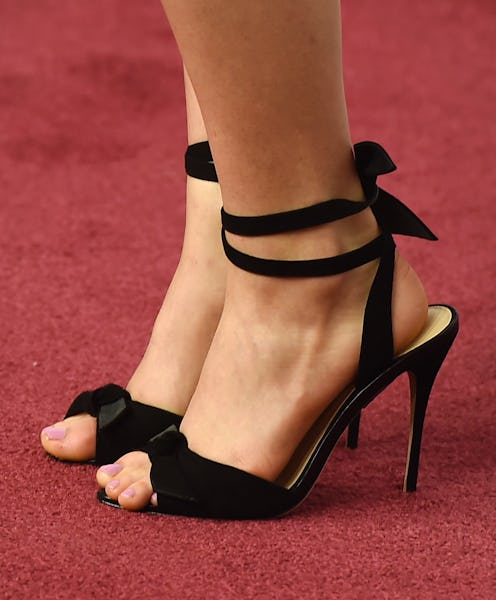Fashion
7 Easy Blisters Hacks That Don't Involve Bandages
Most people would agree that spring weather means sandals and flip flops. And strappy footwear usually means cuts and blisters. Covering your feet with bandages can help prevent blisters by adding an extra barrier between your skin and the unforgiving shoe strap. Bandages can also make walking possible again, if you’re unfortunate enough to already have horribly painful blisters. Put simply, they’re the saviors of cute but unsatisfactory shoes.
But realistically, we can’t be covering our feet up with them all the time. Some pairs of shoes have too many straps for it to be reasonable. We don’t want to have more band-aid than skin showing (plus, if that really is the case, I would recommend trying a different pair of shoes).
The skin on my feet cuts and scars pretty easily. For a long time, blisters were just part of life for a few weeks every spring, until my feet toughened up against the flip-flops I insisted on wearing. So I’ve done a bit of research, and collected here a list of ways to deal with blisters—from avoiding them in the first place, to walking with them, to helping them heal.
1. Start By Buying The Right Shoes
With certain kinds of shoes, like heels, a certain amount of discomfort and blisters are expected. But buying the right shoes can lessen the pain. Alison Garton, a podiatrist, or doctor who treats feet, ankles and related parts of the leg, told the Wall Street Journal that if shoes don’t fit right in the store, we shouldn’t buy them. “You’re not going to be able to ‘break in’ shoes,” she said. If you can tell right away that something’s rubbing your foot wrong, don’t buy it.
2. Choose The Right Material
Another source, Prevention magazine, recommended buying leather flip-flops instead of plastic ones. It might be a little harder to find bright, awesome colors, but the material is softer and less likely to cause irritation, like blisters.
3. Test The Shoes
Another publication, Women’s Health, suggested wearing new sandals around the house for a day, with socks on, before taking them outside. Yeah, that's right. I'm suggesting socks and sandals. The socks will protect your skin while you figure out which straps rub too hard. And once you’ve identified the problems spots, you can address them! See below.
4. Grease Your Feet
Dr. Scholl’s For Her Miracle Shield, $7, Amazon
Women’s Health also suggested putting a slicking solution, like Dr. Scholl’s For Her Miracle Shield, on the parts of your foot that are likely to get blisters. The solution will act like a barrier, similar to bandages. It won’t help once you have a blister, but it might save you from getting one.
5. Cushion The Blisters
Walgreens Callus Cushions, $4, Walgreens
Once you’ve got blisters, it can be hard to walk around while you wait for them to heal. Trust me when I say little foot cushions can save you. They’ve got a hole in the middle, so you aren’t putting extra pressure on your blisters, and they cushion the skin around the wound. Check out Walgreens Callus Cushions, or similar ones.
6. If You’re Trying To Heal Your Blisters, Leave Them Alone
I know they’re awful. But according to Livestrong.com, the best thing to do might be to keep your hands off them. According to Dr. Tina M. St. John, who wrote the article, the raised skin and fluid inside the blister are keeping the more sensitive skin at the base of the blister safe. As a good rule of thumb, she says you should trust your body and let it do its thing.
7. Be Clean When You Drain Blisters
But of course, sometimes waiting for your body to heal on it’s own just doesn’t do it. Foot&Ankle has detailed instructions on how to drain a blister. It’s not pretty, but if you’re going to drain them anyway, make sure you wash your hands and sterilize your needle first. Then, when you puncture the blister, make as small a hole as possible, and try to keep ask much skin in tact as possible. When you're done, make sure you cover the wound with a band-aid or Neosporin.
Whatever you end up doing, do your best to keep everything clean, and be kind to your feet. Happy (almost) sandal season!
